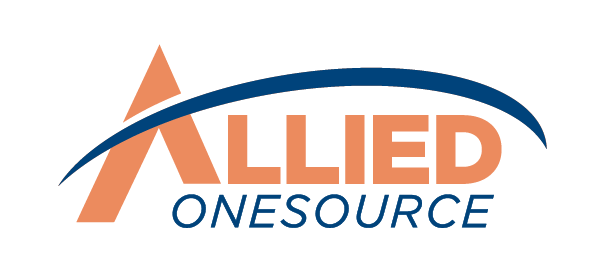Workforce Agility Lessons: What Employers Should Take into the New Year
Your workforce planning for 2026 needs to account for what actually changed in 2025. Major shifts happened in job growth rates, remote work adoption, and AI implementation that directly impact how you should approach talent acquisition and retention.
Understanding these shifts helps you make informed decisions about your workforce strategy rather than continuing approaches that may no longer match current market conditions. Here are five key workforce developments from 2025 and what they mean for your talent planning moving forward.
Lesson 1: Job Growth Slowdown Demanded Internal Talent Development
According to the Bureau of Labor Statistics, (BLS) job growth is projected at 0.4 percent annually compared to the 1. 3 percent growth recorded over the previous decade.¹ This slowdown made external hiring more competitive and expensive, forcing organizations to look inward for workforce agility solutions rather than relying on adding headcount.
Action: Map Internal Skills and Create Development Pathways
Begin by identifying which employees have developed transferable skills that could apply to other roles within your organization. Your manufacturing floor supervisor might have the analytical skills needed for quality assurance, or your experienced call center agent could transition into training new hires.
Document these capabilities in a way that hiring managers can easily access when planning projects or filling positions. Then establish clear pathways showing employees how their current experience can evolve into advancement opportunities, paired with mentorship programs that connect high-potential workers with experienced team members who can guide their development.
Lesson 2: Expertise Crisis Hit Faster Than Expected
According to Gartner, the expertise gap is intensifying as retirements surge while technological disruption reduces opportunities for novice employees to develop deep knowledge.² Organizations discovered that their most valuable knowledge existed only in departing employees' heads, creating immediate capability gaps when senior workers left.
Action: Build Knowledge Transfer Systems Now
Start documenting critical processes before you need them, focusing on decision-making approaches rather than just procedural steps. Consider how your senior IT technicians troubleshoot complex problems or how experienced supervisors handle difficult client situations.
Establish mentorship programs that pair junior employees with senior staff for several months before any planned departures, and build succession planning frameworks that identify key roles while developing internal candidates well before positions become vacant.
Lesson 3: AI-First Strategies Backfired for Most Companies
AI-first organizations will destroy productivity in their search for it, as they prioritize automation over thoughtful integration. Companies that rushed to automate without understanding workflow impacts found themselves dealing with increased friction rather than improved efficiency through strategic workforce planning.
Action: Focus on Human-AI Collaboration, Not Replacement
Identify specific tasks where AI can support your employees rather than replace entire roles. Train your workforce to work effectively with AI tools, emphasizing how technology can enhance their decision-making rather than make decisions for them.
Develop guidelines about when to rely on AI insights and when human judgment should override algorithmic recommendations, ensuring your team maintains control over critical processes.
Lesson 4: Remote Work Became Geographic Competitive Advantage
According to the Society for Human Resource Management (SHRM), 82 percent of executives now allow employees to work remotely at least part of the time, while 47 percent allow full-time remote work.³ This geographic flexibility became particularly valuable for accessing specialized skills that were scarce or expensive in local markets.
Action: Expand Your Talent Geography
Develop hiring processes that can evaluate candidates regardless of location, particularly for roles like administrative support or customer service where physical presence isn't required.
Invest in collaboration tools that support distributed teams effectively and create onboarding programs designed specifically for remote employees. Focus on establishing performance metrics that emphasize results rather than location or hours worked.
Lesson 5: Skills-Based Hiring Finally Replaced Credential Requirements
Labor shortages forced organizations to focus on demonstrated abilities rather than educational credentials, discovering quality talent they had previously overlooked. This approach proved particularly effective for roles where practical skills matter more than formal degrees, supporting greater workforce agility through faster adaptation to changing requirements.
Action: Redesign Job Requirements Around Competencies
Work with your staffing partners to develop candidate profiles that emphasize specific abilities rather than degree requirements. For light industrial positions, focus on practical qualifications such as:
- OSHA 10-hour safety certification completion
- Demonstrated experience with specific machinery or equipment types
- Measurable productivity metrics from previous roles (units per hour, quality scores)
- Physical capability assessments relevant to job demands
- Create assessment methods that test candidates' actual abilities to perform job tasks, such as skills demonstrations or trial periods that reveal how well someone can handle the real demands of the position rather than relying solely on resume screening.
Build Your Agile Workforce Strategy with Allied OneSource
These workforce agility lessons from 2025 require both market insight and operational expertise to implement effectively. At Allied OneSource, we've guided organizations through these exact transitions; from expanding geographic talent pools to developing skills-based hiring processes across industries like manufacturing, IT, and administrative services.
Our understanding of how these workforce dynamics play out in real hiring situations helps companies move from recognizing trends to actually building more agile talent strategies.
Ready to apply these lessons to your workforce planning? Contact us to discuss how these strategies can strengthen your talent approach for the year ahead.
References
- Bureau of Labor Statistics, U.S. Department of Labor. (2024, August 29). Employment projections: 2023–2033 summary. https://www.bls.gov/news.release/ecopro.nr0.htm
- McRae, E. R. (2025, January 8). 9 future of work trends for 2025: Harnessing AI, inclusion and innovation to drive organizational success and resilience. Gartner. https://www.gartner.com/en/articles/future-of-work-trends
- Agovino, T. (2024, March 27). What will the workplace look like in 2025? Society for Human Resource Management. https://www.shrm.org/topics-tools/news/all-things-work/will-workplace-look-like-2025











